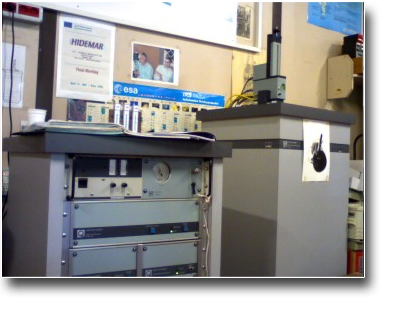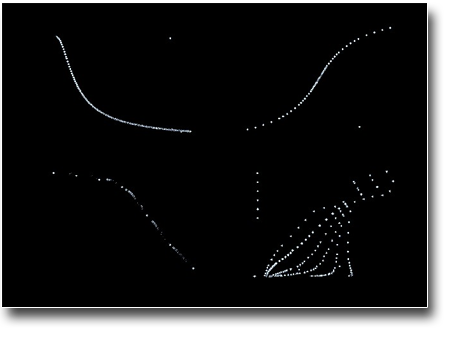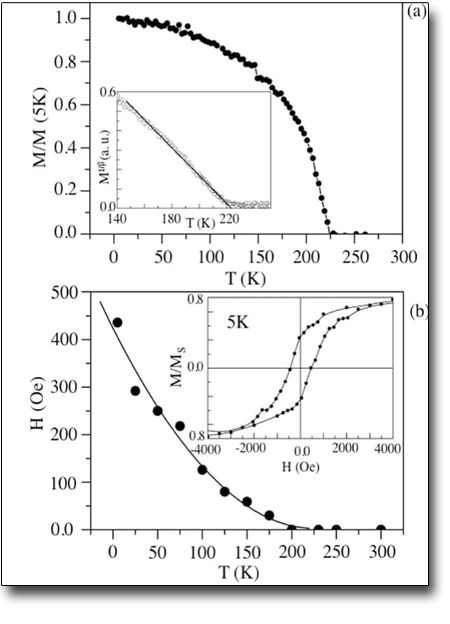
Quantum Design MAGNETOMETR SQUID MPMS XL-5
Alberto M.Testa -
Sara Laureti -
Nanostrctured Magnetic Materials Laboratory (nM2-Lab)

TECHNICAL SPECIFICATIONS
- Superconducting magnet with Hmax max = 5.5 T
- Operating range 4K< T < 400K
- Sensitivity in magnetic moment : 1 *10-6 emu
AVAILABLE TECHNIQUES
The SQUID control software supports a number of different measurement protocols to evaluate primary magnetic properties(e.g. Ms, Hc, Kan, TC) and for advanced studies on inter-particle (grain) interactions, aging effects and temperature dependent behavior.
- Field-dependent Magnetization Loops
- Remanence Measurements
- Direct Current Demagnetizing Curves (DCD)
- isothermal Remanent Measurements (IRM)
- δM / Henkel plot
- Field and zero field cooled
- TermoRemanence curves
- Time-dependent Magnetization Measurements
SAMPLE
-
Sample dimensions for disks or thin film : 3 x 3 mm (max)
-
Special sample holders available for powder and liquid samples
-
Average time duration for an hysteresis loop is approx. 120 min
USE FOR
- Magnetic thin films and heterostructures
- Magnetic nanoparticles
- Magnetic nanoarchitectures
- Hybrid magnetic nanocomposites
- Fundamental studies on materials of applicative interest (energy, biomedicine, sensors, environment, information storage, ICT and cultural heritage)
Case Studies
Magnetic properties of ultra-small CoFe nanoparticles2O4
The magnetic properties of ultra-small (3 nm) CoFe2O4 nanoparticles have been investigated by DC magnetization measurements as a function of temperature and magnetic field. The main features of the magnetic behaviour are blocking of non-interacting particle moments (zero-field-cooled magnetization Tmax ≈ 40 K), a rapid increase of saturation magnetization at low T (up to values higher than for the bulk material) and an increase in anisotropy below 30 K due to the appearance of exchange bias. The low temperature behaviour is determined by a random freezing of surface spins. Localized spin-canting and cation distribution between the two sublattices of the spinel structure account quantitatively for the observed increase in saturation magnetization.
D. Peddis et al., Nanotechnology 21, 22341 ( 2010) 125705 ( 2010)


Ferromagnetic Mn-doped Si 0.3 Ge 0.7 nanodots self-assembled on Si(100)
LThe magnetic properties of Mn5Ge1Si2 nanocrystallites embedded in Si 0.3 Ge 0.7 nanodots have been investigated by magnetization measurements as a function of temperature and magnetic field. A ferromagnetic behaviour has been observed, with a Curie temperature of approx. 225 K and a value of the critical exponent = 0.202 indicating a finite-sized two-dimensional (2D) XY layered magnet, with the hysteresis observed at 5K in the XY plane only
P. De Padova et al., J. Phys.: Condens. Matter 24 (2012) 142203

 English (UK)
English (UK)  Italiano (Italia)
Italiano (Italia)